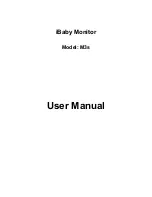
Glossary
U
USB or Universal Serial Bus
A smart plug for PC peripherals.
USB automatically determines resources (like driver software and
bus bandwidth) required by peripherals. USB makes necessary resources available without user
intervention.
●
USB eliminates "case anxiety" -- the fear of removing the computer case to install add-on
peripherals. USB also eliminates adjustment of complicated IRQ settings when installing
new peripherals.
●
USB does away with "port gridlock." Without USB, PCs are normally limited to one printer,
two Com port devices (usually a mouse and modem), one Enhanced Parallel Port add-on
(scanner or video camera, for example) and a joystick. More and more peripherals for
multimedia computers arrive on the market every day. With USB, up to 127 devices can run
simultaneously on a computer.
●
USB permits "hot plug-in." There's no need to shut down, plug in, reboot and run set-up to
install peripherals. And no need to go through the reverse process to unplug a device.
In short, USB transforms today's "Plug-and-Pray" into true Plug-and-Play!
Hub
A Universal Serial Bus device that provides additional connections to the Universal Serial Bus.
Hubs are a key element in the plug-and-play architecture of USB. The Figure shows a typical hub.
Hubs serve to simplify USB connectivity from the user's perspective providing low cost and
complexity.
Hubs are wiring concentrators and enable the multiple attachment characteristics of USB.
Attachment points are referred to as ports. Each hub converts a single attachment point into
multiple attachment points. The architecture supports concatenation of multiple hubs.
The upstream port of a hub connects the hub towards the host. Each of the other downstream ports
of a hub allows connection to another hub or function. Hubs can detect, attach and detach at each
downstream port and enable the distribution of power to downstream devices. Each downstream
port can be individually enabled and configured at either full or low speed. The hub isolates low
speed ports from full speed signaling.
A hub consists of two portions: the Hub Controller and Hub Repeater. The repeater is a protocol-
controlled switch between the upstream port and downstream ports. It also has hardware support
for reset and suspend/resume signaling. The controller provides the interface registers to allow
communication to/from the host. Hub specific status and control commands permit the host to
configure a hub and to monitor and control its ports.
file:///D|/EDFU/LCD/200WB7/manual/ENGLISH/200WB7/GLOSSARY/glossary.htm (7 of 9)2006-12-11 ¤U¤È 05:12:27
Содержание 200WB7
Страница 51: ...SmartManage file D EDFU LCD 200WB7 manual ENGLISH 200WB7 PRODUCT smart htm 6 of 6 2006 12 11 U È 05 09 15 ...
Страница 61: ...The Base file D EDFU LCD 200WB7 manual ENGLISH 200WB7 INSTALL base htm 5 of 5 2006 12 11 U È 05 09 26 ...
Страница 66: ...On Screen Display file D EDFU LCD 200WB7 manual ENGLISH 200WB7 OSD osddesc htm 2 of 5 2006 12 11 U È 05 10 31 ...
Страница 67: ...On Screen Display file D EDFU LCD 200WB7 manual ENGLISH 200WB7 OSD osddesc htm 3 of 5 2006 12 11 U È 05 10 31 ...
Страница 69: ...On Screen Display file D EDFU LCD 200WB7 manual ENGLISH 200WB7 OSD osddesc htm 5 of 5 2006 12 11 U È 05 10 31 ...








































